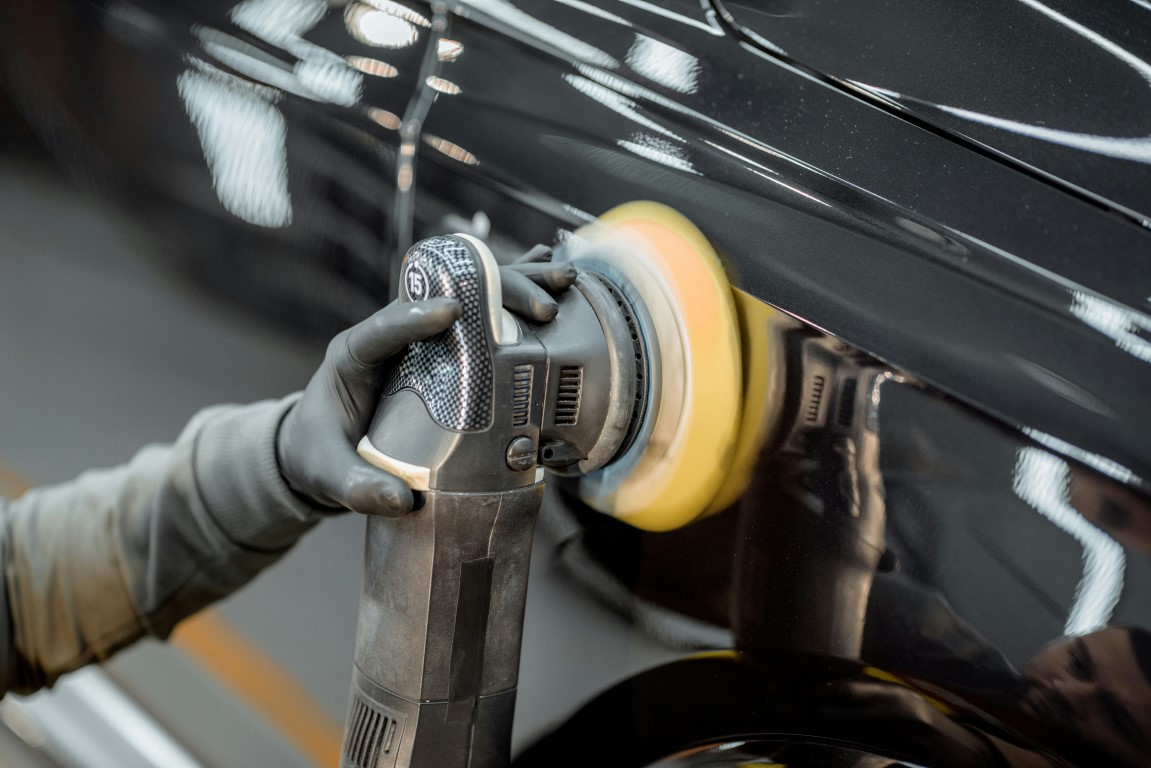
Polishing for Perfection
Achieving a flawless car surface requires using the right polishes and following a dedicated polishing procedure. The choice of polish impacts the level of gloss and the duration of protection it provides.
Types of Polishes and Their Uses
Car polishes can be categorized based on their abrasiveness and specific uses. Rubbing compounds are the most abrasive, ideal for removing heavy oxidation and severe scratches. Polishing compounds offer a medium level of abrasiveness, suitable for addressing minor imperfections and restoring a vehicle’s shine.
For light scratches and surface cleaning, finishing polishes are the least abrasive, enhancing gloss without removing much paint. Depending on the car’s surface condition, a combination of these polishes might be necessary to achieve optimal results. Selecting the appropriate polish ensures the vehicle maintains its appearance without causing damage.
Step-by-Step Polishing Procedure
Polishing a car requires specific tools and careful steps to protect the paintwork. Begin by washing and drying the car thoroughly to remove any dirt and contaminants. Apply the chosen polish to a clean applicator pad, and work in small sections using a circular motion. This ensures even coverage and reduces the risk of creating swirl marks.
Using a dual-action polisher can help achieve professional-level results. After polishing each section, wipe off any residue with a microfiber towel to reveal the shine. It’s crucial to avoid direct sunlight during the process, as it can cause the polish to dry too quickly on the surface. Repeat the process until the entire car is polished to perfection.
Waxing for Longevity and Shine

Waxing plays a crucial role in maintaining a car’s appearance and protecting it from environmental damage. It provides a layer that enhances the sheen and acts as a barrier against harmful elements.
Benefits of Car Waxing
Car waxing offers several advantages, primarily by creating a protective barrier that shields the car’s paintwork from UV rays, rain, and dirt. Waxing facilitates easier cleaning, as dirt and contaminants are less likely to adhere to a well-waxed surface.
A good wax, like Z-8, also increases paint longevity by lessening oxidization, which keeps the car looking new. Regular waxing minimizes scratches by filling in minor paint imperfections, resulting in a smooth surface that reflects light uniformly and enhances the car’s shine.
How to Apply Car Wax Correctly
Proper application is key to maximizing the benefits of car waxing. Start with a clean, dry car to ensure optimal wax adherence. A small, soft cloth or applicator pad helps apply the wax evenly.
Apply in small sections, using a circular motion, and let the wax sit for the recommended time on the product label. Buff the wax off with a microfiber cloth to reveal a high-gloss finish. For best results, wax the car every three months, maintaining consistent protection and shine.